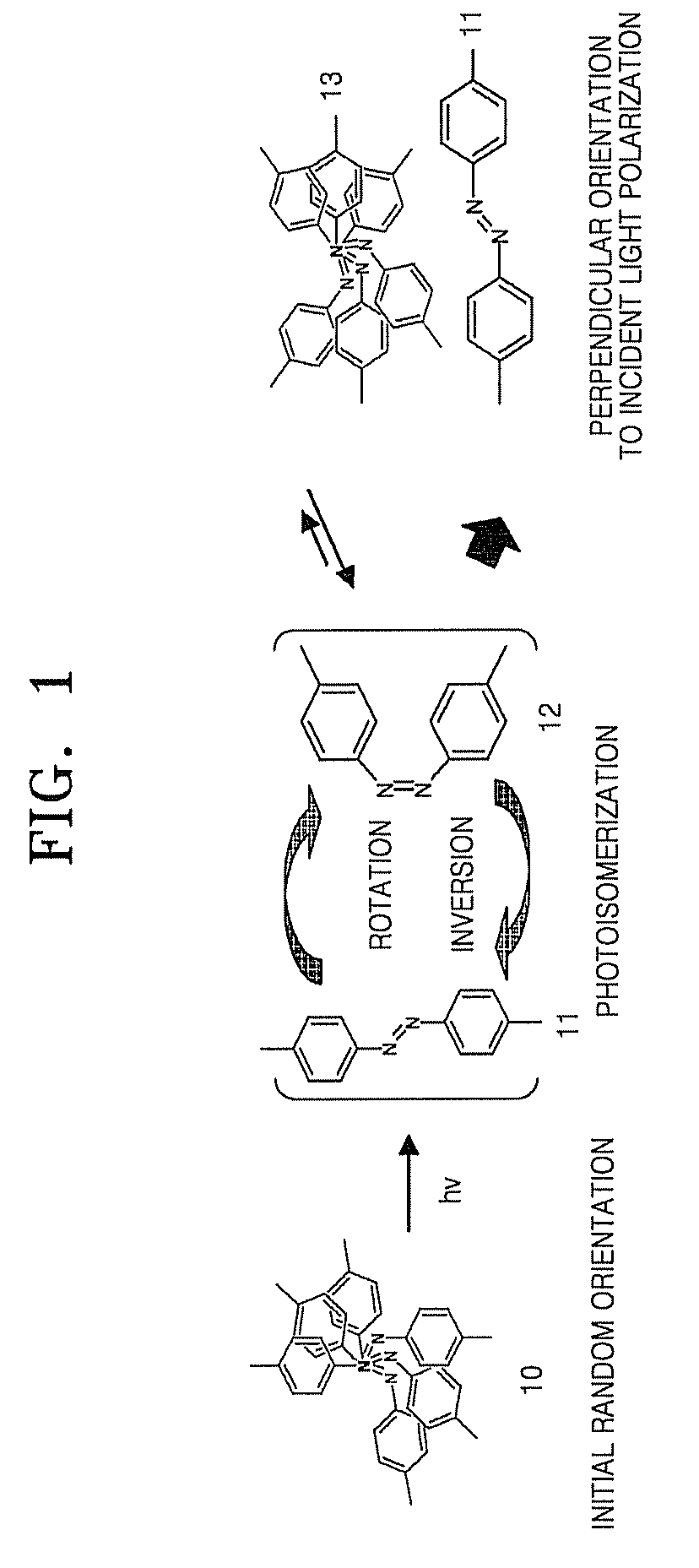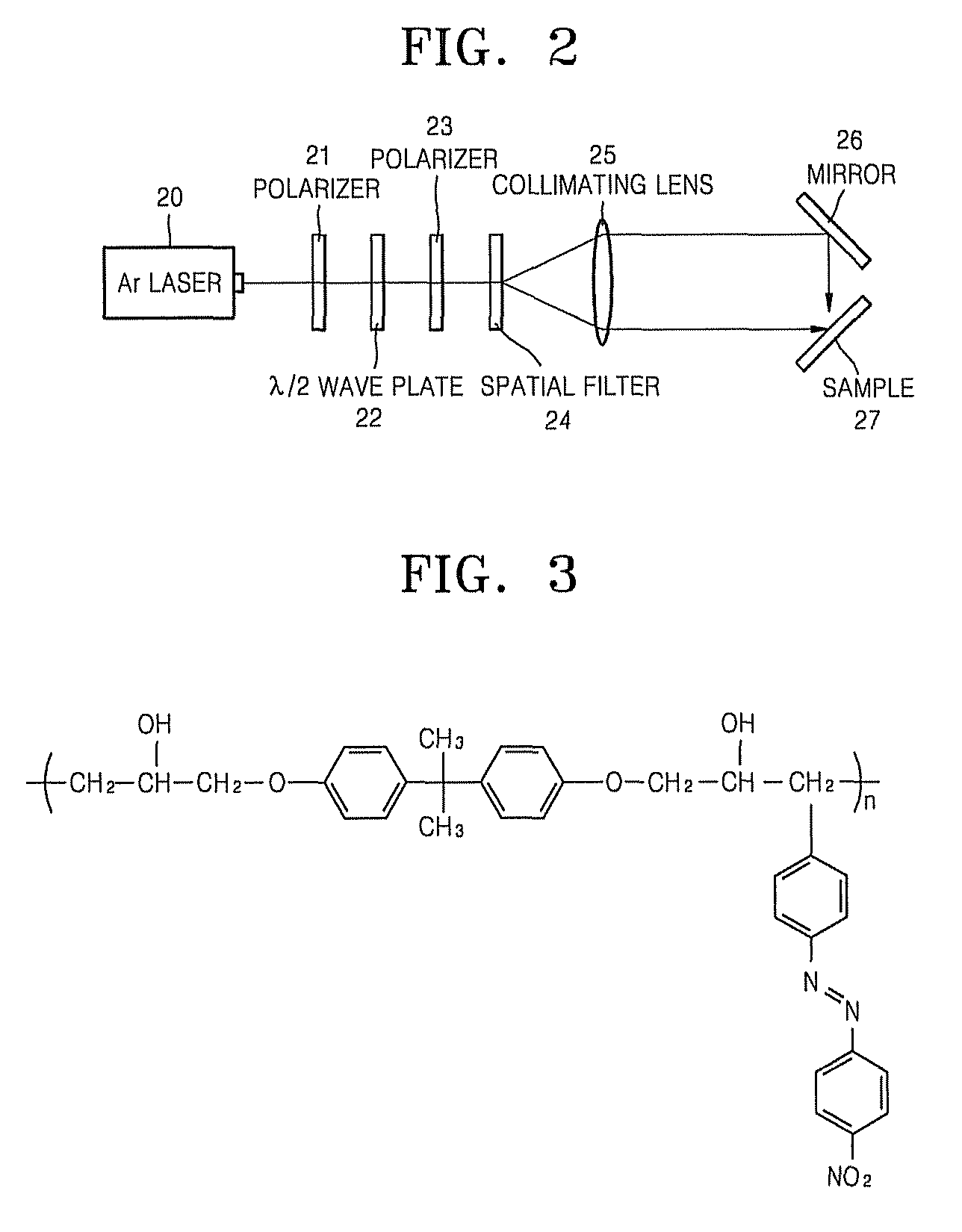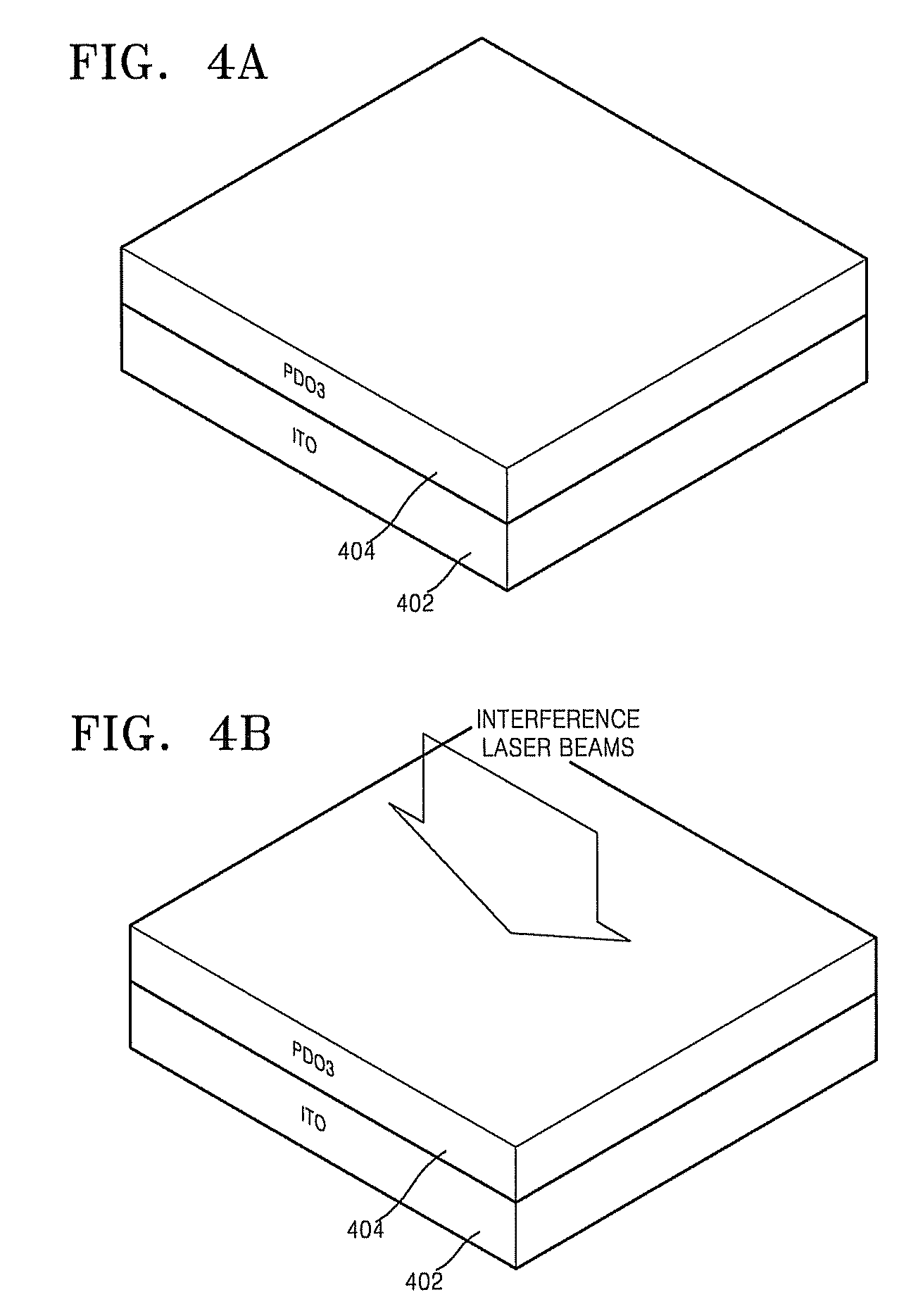Method of forming fine pattern using azobenzene-functionalized polymer and method of manufacturing nitride-based semiconductor light emitting device using the method of forming fine pattern
a technology of azobenzene and functionalized polymers, which is applied in the field of pattern formation, can solve the problems of increased manufacturing costs of electron beam lithography, difficulty in forming pattern dimensions of 1 m or less, and inconvenient use of masks and lenses in conventional light lithographic methods, etc., and achieves the effect of improving light extraction efficiency and optical power
- Summary
- Abstract
- Description
- Claims
- Application Information
AI Technical Summary
Benefits of technology
Problems solved by technology
Method used
Image
Examples
example
Formation of a Fine Pattern
[0036]Copolymer PDO3 (referring to FIG. 3) was employed as the azobenzene-functionalized polymer. A solution, in which PDO3 was dissolved in cyclohexanone, was spin-coated on a substrate having an ITO layer deposited on a surface thereof to form a resulting layer having a thickness of 500 μm. The resulting layer was dried in a vacuum oven to remove the cyclohexanone organic solvent from the resulting layer at a temperature of 100° C. to form a PDO3 film. The PDO3 film was exposed using the optical device of FIG. 2 where the Ar laser is operating at a wavelength of 488 nm for one hour to form the surface relief gratings on the PDO3 film. Next, the ITO layer was etched using the patterned PDO3 film of the surface relief gratings as the etching mask. To etch the ITO layer, an ICP etching method was used, and was performed at a power output of 1000 watts for 2 minutes. In the ICP etching method, Ar gas and methane (CH4) gas in a volume ratio of 9:1 were mixed ...
PUM
| Property | Measurement | Unit |
|---|---|---|
| temperature | aaaaa | aaaaa |
| temperature | aaaaa | aaaaa |
| temperature | aaaaa | aaaaa |
Abstract
Description
Claims
Application Information
 Login to View More
Login to View More - R&D
- Intellectual Property
- Life Sciences
- Materials
- Tech Scout
- Unparalleled Data Quality
- Higher Quality Content
- 60% Fewer Hallucinations
Browse by: Latest US Patents, China's latest patents, Technical Efficacy Thesaurus, Application Domain, Technology Topic, Popular Technical Reports.
© 2025 PatSnap. All rights reserved.Legal|Privacy policy|Modern Slavery Act Transparency Statement|Sitemap|About US| Contact US: help@patsnap.com



